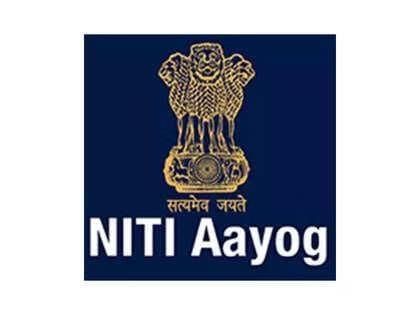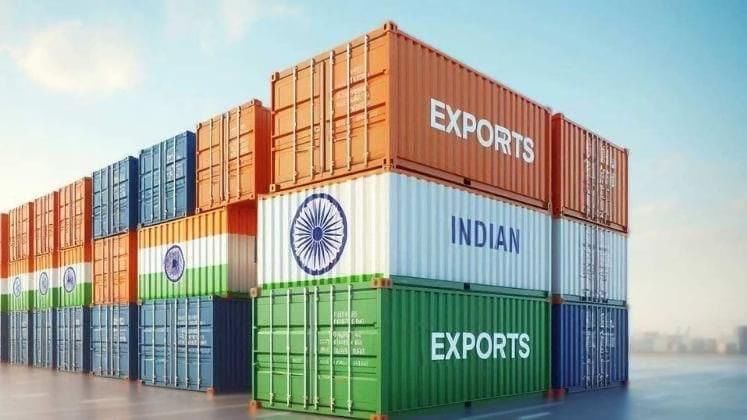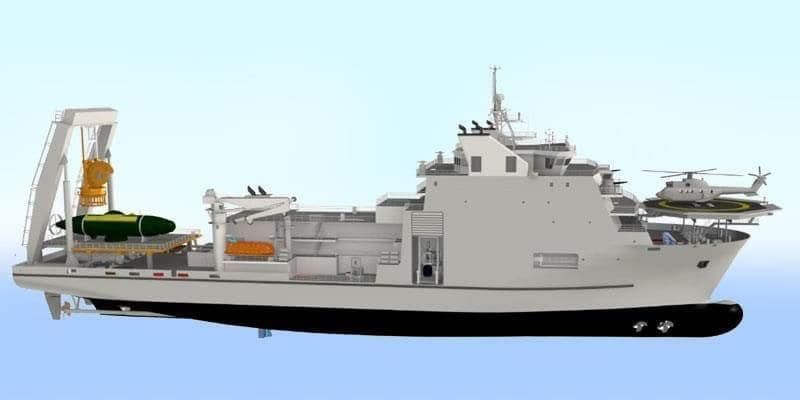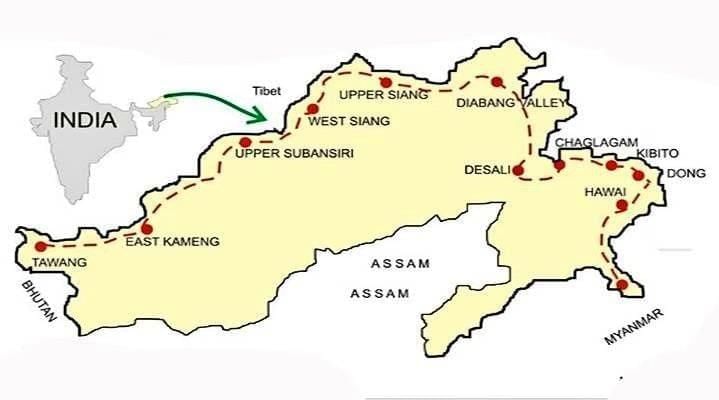Weekly Current Affairs (8th to 14th July 2025) | General Test Preparation for CUET UG - CUET Commerce PDF Download
North Eastern Region District SDG Index 2023-24
 Why in News?
Why in News?
- The North Eastern Region (NER) District Sustainable Development Goals (SDG) Index for 2023-24 was unveiled by NITI Aayog and the Ministry of Development of North Eastern Region (MoDoNER), with support from UNDP. This second edition assesses the sustainable development progress of 121 districts across eight states, demonstrating a strong regional commitment to social, economic, and environmental objectives as the 2030 SDG deadline approaches.
Key Takeaways
- The NER District SDG Index employs NITI Aayog's SDG India Index methodology to monitor district-level advancements.
- Districts are categorized as Achiever, Front Runner, Performer, or Aspirant based on their composite scores.
- Prominent states include Mizoram, Sikkim, and Tripura, with all districts classified as Front Runners.
- Mizoram's Hnahthial district leads the region with a score of 81.43, while Longding district of Arunachal Pradesh has the lowest at 58.71.
- The index reflects significant improvements in health, education, and well-being across various districts.
Additional Details
- Performance Insights: The index reveals that good health and well-being metrics have improved in 93 districts, with notable progress in Assam in areas such as Zero Hunger, Quality Education, Clean Water and Sanitation, and Decent Work. This progress is largely attributed to national flagship initiatives and localized efforts like the Aspirational Districts initiative.
- Role of Stakeholders: The report illustrates the concept of cooperative federalism, bringing together state and central entities to identify gaps and propose targeted interventions. It aligns with India's vision of achieving a Viksit Bharat by 2047, emphasizing the need for data-driven governance to enhance sustainable development across the NER.
- District Performance by State:

The NER District SDG Index serves as a crucial instrument for tracking progress toward the Sustainable Development Goals by 2030. It highlights both regional disparities and successes, guiding focused efforts toward low-performing districts. Continuous monitoring and optimization of resources are essential to foster balanced growth throughout the North Eastern Region.
India’s Invisible Trade Surpasses Merchandise Exports
 Why in News?
Why in News?
- India's foreign trade landscape has witnessed a significant evolution, shifting focus from traditional physical goods to a more substantial contribution from intangible exports. This transformation highlights the changing dynamics of the global economy and India's increasing role in international trade.
Key Takeaways
- Invisible trade, including services and remittances, has become India's largest source of foreign exchange.
- Merchandise exports, although significant, are experiencing fluctuations and a growing deficit.
- India's services sector has shown remarkable growth, contributing significantly to invisible trade.
Additional Details
- Merchandise Exports: India's exports of physical goods increased from $66.3 billion in 2003-04 to $456.1 billion in 2022-23, though they fell to $441.8 billion by 2024-25. The trade deficit in goods reached $729 billion.
- Invisible Trade: This category includes services exports and remittances, growing from $53.5 billion in 2003-04 to $576.5 billion in 2024-25. The main components are services exports ($387.5 billion) and private remittances ($135.4 billion).
- Services Exports: Key areas of growth include software services, business, financial, and communication services. These sectors are less impacted by trade barriers compared to physical goods.
- Balance of Payments: Despite a merchandise trade deficit of $287.2 billion, India maintained a net invisible surplus of $263.8 billion, helping to keep the overall current account deficit at $23.4 billion.
- Comparison with China: While China boasts a massive goods export surplus, it faces an invisible trade deficit. Conversely, India maintains a surplus in services trade, emphasizing its role as a global services and remittance hub.
- Trade Negotiations: Current discussions between India and the U.S. focus on tariffs for goods, with no emphasis on invisible trade, indicating organic growth driven by demand and India's skilled workforce.
In summary, India's shift towards invisible trade marks a significant change in its economic landscape, highlighting the importance of services and remittances in supporting the country's external balance amidst fluctuating merchandise exports.
Google AI Overviews Face EU Antitrust Complaint
Why in News?
- Recent developments have brought Google's AI-powered summaries, known as AI Overviews, under formal antitrust scrutiny by the European Union. A coalition of independent publishers has lodged a complaint with the European Commission, alleging that Google is abusing its dominant market position by utilizing AI Overviews to divert traffic and revenue away from original content creators. This situation has ignited a broader discussion regarding the implications of generative AI on digital journalism and the overall online content ecosystem.
Key Takeaways
- AI Overviews generate concise summaries that appear above traditional search results.
- Publishers express concerns about reduced website traffic and revenue due to these summaries.
- The European Commission and UK's CMA are reviewing the complaints against Google.
- Google defends AI Overviews as beneficial for user experience and content discovery.
Additional Details
- What Are Google AI Overviews? AI Overviews are brief summaries produced by Google's advanced AI models, designed to deliver quick answers by synthesizing information from various web sources. Initially introduced as the Search Generative Experience (SGE) in May 2023, the feature is now active in over 100 countries and can present information in formats such as paragraphs, lists, or tables, often linking back to the original content.
- How Do AI Overviews Work? Google employs a customized AI model named Gemini to generate AI Overviews. This model uses a method known as Retrieval-Augmented Generation (RAG), which actively searches its web index for relevant information rather than depending solely on pre-trained data. Google states that each Overview is supported by top web results with links for further exploration.
- Publishers' Concerns: Publishers argue that AI Overviews decrease user clicks to their websites, which results in lower traffic and diminished advertising and subscription revenues. The Independent Publishers Alliance claims Google misuses their content without fair compensation. Additionally, since May 2024, Google has begun including advertisements within AI Overviews, further monetizing publisher content directly.
- Regulatory Actions: The complaint submitted to the European Commission and the UK's CMA seeks interim measures to suspend the use of AI Overviews during the investigation. The CMA has acknowledged this complaint and is reviewing the strategic market status of Google.
- Google’s Defence: Google refutes the allegations, arguing that AI Overviews improve user experience by providing answers to more questions and creating new opportunities for content discovery. The company claims that it drives billions of clicks daily and that traffic fluctuations are influenced by various factors.
This ongoing situation highlights the tension between technological innovation and the rights of content creators in the digital landscape, emphasizing the need for a balanced approach as regulatory bodies assess the implications of AI in content delivery.
US Tariff Escalation
 Why in News?
Why in News?
- The United States is intensifying its tariff campaign, threatening punitive duties on more than a dozen countries starting August 2025. This escalation follows a delayed deadline for trade negotiations under a “reciprocal” tariff policy and has raised concerns over global market stability and international relations.
Key Takeaways
- The tariff initiative was first announced in April 2025, with a 90-day grace period for negotiations.
- Fourteen countries are warned of tariffs ranging from 25% to 40%, significantly affecting Southeast Asian nations.
- Only two trade deals have been finalized so far, with the UK and Vietnam.
- The tariff threats have resulted in notable market volatility and a decline in investor confidence.
Additional Details
- Background of US Tariff Policy: The policy was designed to address trade imbalances, targeting countries with export surpluses to the US. The original aim was to secure 90 trade deals within 90 days, but progress has been limited, necessitating an extension of the deadline.
- Countries Affected:Tariff rates range as follows:
- Indonesia: 32%
- Cambodia: 36%
- Thailand: 36%
- Laos: 40%
- Myanmar: 40%
- Bangladesh: 35%
- Others include Tunisia, Malaysia, Kazakhstan, South Africa, and Bosnia and Herzegovina at 30%.
- Market Impact: The impending tariffs have led to significant market volatility, with US stock indices dropping and the dollar experiencing its worst half-year performance in over fifty years. Economists are concerned about the potential for slowed economic growth due to disrupted supply chains.
- Reasons for Targeting Asian Countries: The US's focus on Asian countries is attributed to perceived trade imbalances, with critics suggesting that the US is indirectly pressuring China by targeting its investment partners in Southeast Asia.
This tariff escalation poses challenges for international trade relations and could have far-reaching implications for global economic stability. Stakeholders are closely monitoring the situation as negotiations continue.
Optical Atomic Clocks Set To Redefine The Second
 Why in News?
Why in News?
- The global scientific community is on the brink of redefining the second, the essential unit of time, through the use of advanced optical atomic clocks. These innovative devices are proving to be more precise and stable than the traditional caesium atomic clocks. A recent worldwide collaboration, which involved 10 optical clocks situated across three continents, has successfully shown extraordinary consistency in time measurement. This significant achievement boosts the potential for adopting optical clocks as the new international time standard by approximately 2030.
Key Takeaways
- Optical atomic clocks are set to replace caesium atomic clocks as the new standard for measuring time.
- Recent global collaboration successfully demonstrated unprecedented agreement in time measurement.
- Redefining the second could occur as early as 2030.
Additional Details
- Evolution of the Second: The second has evolved in its definition, initially based on Earth's movements, then refined in the mid-20th century using quartz clocks. In 1967, it was redefined in terms of the frequency of radiation from caesium-133 atoms, measured at 9,192,631,770 cycles per second.
- Working Principle of Caesium Atomic Clocks: Caesium atomic clocks utilize microwave radiation to induce energy transitions in Cs atoms. They adjust the microwave frequency to maximize these transitions, maintaining a precise frequency of 9,192,631,770 Hz to mark one second.
- Limitations of Caesium Clocks: Although caesium clocks are remarkably accurate, losing only one second every 300 million years, some applications require even greater precision. Optical atomic clocks can measure frequencies approximately 10,000 times higher, achieving time measurement accuracy to the 18th decimal place.
- Global Comparison of Optical Clocks: A notable test involved 10 optical clocks from various countries, linked by optical fibers and GPS techniques, which measured 38 independent frequency ratios over 45 days. The results demonstrated agreement within factors of 10^-16 to 10^-18.
- Challenges and Future Steps: Minor discrepancies were noted during testing, necessitating further resolution before international redefinition. Researchers are developing tools to manage these discrepancies effectively.
- Applications of Ultra-Precise Timekeeping: Atomic clocks are crucial for technologies like GPS and telecommunications. The advancements in optical clocks will enhance these fields by providing more accurate timing, thus impacting various industries reliant on precise time measurement.
The potential redefinition of the second marks a significant advancement in timekeeping technology, promising enhanced precision for both scientific research and technological applications in various sectors.
District Mineral Foundation Operational Guidelines
 Why in News?
Why in News?
- The Union Ministry of Coal and Mines has introduced new operational guidelines for the Aspirational District Mineral Foundation (DMF) Programme as of July 10, 2025. These guidelines are designed to better integrate DMF initiatives with the Aspirational District Programme (ADP) and the Aspirational Block Programme (ABP), thereby promoting socio-economic advancement in India's mining-affected regions that are underserved.
Key Takeaways
- The new guidelines aim to enhance alignment between DMF initiatives and broader development goals.
- DMFs have played a vital role in funding essential projects in health, education, nutrition, and infrastructure.
- Efforts are focused on improving living standards and promoting cooperative federalism.
Additional Details
- Role of DMF: DMFs have been instrumental in financing projects that uplift the quality of life in mining communities, serving as a model for inclusive growth and collaborative governance.
- The guidelines emphasize the importance of treating DMF as a mission for holistic development, urging District Collectors and State Nodal Officers to ensure the full utilization of available funds.
- Workshops highlighted themes such as transparency, innovation, and capacity building, with significant contributions from representatives of the Comptroller and Auditor General (CAG) on accountability practices.
- States like Jharkhand, Maharashtra, and Odisha have been acknowledged for their proactive approach in adopting these revised guidelines and ensuring timely audits.
The Ministry of Mines envisions that the DMF will play a crucial role in ensuring that the benefits of mineral wealth reach the most marginalized communities. This strategic focus aims to foster inclusive and sustainable development in mineral-rich regions, aligning with the national goal of creating a self-reliant India.
Bulgaria to Join Eurozone as 21st Member
 Why in News?
Why in News?
- On July 8, 2025, EU finance ministers approved Bulgaria's adoption of the euro, effective January 1, 2026. This decision positions Bulgaria as the 21st nation to enter the eurozone, marking a significant step nearly two decades after its accession to the European Union.
Key Takeaways
- Bulgaria will transition from its national currency, the lev, to the euro.
- The fixed exchange rate is established at 1.95583 lev per euro.
- This move aims to strengthen Bulgaria's integration within the EU's economic framework.
Additional Details
- Transition from Lev to Euro: The Bulgarian government is focused on ensuring a smooth transition to safeguard citizens' interests. Prime Minister Rossen Jeliazkov highlighted this moment as historic, acknowledging all partners involved in the process.
- Economic and political challenges had previously delayed Bulgaria's euro adoption, including high inflation and political instability, with seven elections occurring within three years.
- Despite meeting the Maastricht criteria recently, public sentiment remains mixed, with concerns over price increases and purchasing power leading to protests in Sofia.
The approval from EU leaders has been overwhelmingly positive, with European Commission President Ursula von der Leyen emphasizing the advantages of the euro for citizens and businesses. European Central Bank President Christine Lagarde expressed confidence in the strengthening of Bulgaria's economy, while EU Economy Commissioner Valdis Dombrovskis viewed the adoption as a stride towards a prosperous future in Europe.
Joining the eurozone is perceived as a strategic move to enhance economic stability and solidify Bulgaria's ties with the West, offering protection against external influences such as Russian pressure. Proponents argue that euro adoption will foster increased investment, trade, and political credibility.
The history of eurozone enlargement shows a gradual expansion from its initial 12 member states in 2002 to the current planned accession of Bulgaria, reflecting the ongoing evolution of the European economic landscape.
In summary, Bulgaria's transition to the euro signifies a crucial development in its economic journey and its deeper integration into the European Union.
Indian Air Force Jaguar Jet Crashes
 Why in News?
Why in News?
- The Indian Air Force (IAF) recently experienced a tragic incident involving the crash of a SEPECAT Jaguar jet in the Churu district of Rajasthan on July 11, 2025. Both pilots lost their lives in the accident, marking the third crash of a Jaguar jet in India this year, highlighting ongoing operational challenges with this aging fighter-bomber. Despite these incidents, the IAF has announced plans to continue the service of the Jaguar until approximately 2040.
Key Takeaways
- The recent crash of a Jaguar jet resulted in the deaths of both pilots.
- This incident signifies the third crash of a Jaguar jet in 2025, raising concerns about the aircraft's safety.
- The IAF intends to maintain the Jaguar in service for another 15 years despite its age.
Additional Details
- Historical Background: The Jaguar was developed through a collaborative effort between Britain and France in the 1960s. Initially designed as a jet trainer, it evolved into a supersonic tactical support aircraft capable of nuclear strike missions. The aircraft first took flight in 1968 and entered service with the IAF in 1979.
- Design and Capabilities: The Jaguar features a conventional swept-wing design, powered by two Rolls-Royce Turbomeca Adour engines. It is equipped with two 30-mm cannons and has seven hardpoints for carrying various munitions. The aircraft can reach speeds of up to Mach 1.6 and has a combat ceiling of 46,000 feet. It has been utilized in several conflicts, including Iraq and Bosnia, and has served as a nuclear delivery platform for multiple nations.
- Jaguar in Indian Air Force Service: India signed a $1 billion deal in 1978 to procure Jaguars, receiving them on loan from the Royal Air Force starting in 1979. HAL produced licensed versions until 2008. Over 160 Jaguars have been inducted, including various models, with around 115 currently operational.
- Reasons for Extended Service Life:
- Delays in indigenous fighter development, particularly related to HAL Tejas, have necessitated the continued use of Jaguars.
- The Jaguar remains effective for deep penetration and nuclear strike roles, especially with recent upgrades like the DARIN III variant.
- The aircraft is cost-effective and easy to maintain, allowing for operational sustainability through quick engine changes and parts cannibalization from retired models.
- Recent Operational Use: Jaguars were involved in Operation Sindoor in May 2025, where they performed long-range air-to-air combat and struck deep-target missions. Approximately 60 Jaguars are being upgraded to the DARIN III standard, which extends their operational life by an additional 15 years.
This incident emphasizes the ongoing challenges faced by the IAF with its older aircraft and the importance of maintaining operational readiness as new fighter development continues to progress.
Indian Navy Commissions Indigenous DSV Nistar
 Why in News?
Why in News?
- The Indian Navy has officially commissioned its first indigenously designed and built Diving Support Vessel (DSV) named Nistar on July 18, 2025. The commissioning ceremony took place at the Naval Dockyard in Visakhapatnam, with the Defence Minister, Rajnath Singh, attending the event. This significant achievement marks a milestone in India's journey towards defense self-reliance and notably enhances the Navy's capabilities in deep-sea diving and submarine rescue operations.
Key Takeaways
- The DSV Nistar is part of India's push for self-reliance in defense.
- It enhances the operational capabilities of the Indian Navy in submarine rescue and deep-sea diving.
- The vessel was constructed with over 80% indigenous content, showcasing contributions from over 120 MSMEs.
Additional Details
- Design and Construction: Nistar was designed and built by Hindustan Shipyard Limited in Visakhapatnam. The ship is approximately 120 meters long and displaces over 10,000 tonnes. It is equipped with a Dynamic Positioning System to maintain precise positioning at sea.
- Operational Capabilities: The vessel supports deep-sea diving and submarine rescue operations. It is equipped with advanced systems such as Air and Saturation Diving Systems, underwater Remotely Operated Vehicles (ROVs), and Side Scan SONAR, significantly expanding its operational reach. Nistar also serves as the 'Mother Ship' for the Deep Submergence Rescue Vehicle (DSRV).
- Medical and Support Facilities: The ship includes a fully operational Operation Theatre, an Intensive Care Unit, an eight-bedded hospital, and hyperbaric medical facilities. These amenities are crucial for treating divers and crew during rescue missions. The vessel can remain at sea for over 60 days and supports helicopter operations, alongside a 15-ton subsea crane for added versatility.
- Strategic Importance: Nistar will be integrated into the Eastern Naval Command, enhancing India's capabilities in the underwater domain and strengthening its strategic posture in the Indian Ocean Region. The name 'Nistar' means 'rescue' in Sanskrit, with its crest featuring an anchor symbolizing reliability and a dolphin representing a seafarer’s friend.
- Legacy and Future Prospects: The new Nistar continues the legacy of the earlier INS Nistar, a submarine rescue vessel acquired from the USSR in 1969 and decommissioned in 1989. The new vessel embodies the motto ‘Surakshita Yatharthta Shauryam’, meaning 'Deliverance with Precision and Bravery'. It is the first of a two-ship class, with the second vessel named Nipun.
- Role in Indian Ocean Region: The Indian Navy conducts extensive diving operations across the Indian Ocean Region (IOR) for submarine rescue, underwater inspections, salvage, and recovery missions. The commissioning of Nistar significantly enhances the Navy’s capacity to efficiently undertake these tasks, supporting sustained patrolling and search and rescue missions in the high seas.
In summary, the commissioning of DSV Nistar represents a significant advancement in India’s maritime capabilities, reinforcing the Navy's operational readiness and commitment to self-reliance in defense.
Arunachal Frontier Highway Project
 Why in News?
Why in News?
- The National Board for Wildlife's Standing Committee has recently sanctioned the diversion of 310 hectares of forest land from the core area of the Namdapha Tiger Reserve. This approval is for the construction of the Arunachal Frontier Highway (NH-913) in Arunachal Pradesh, raising significant concerns regarding wildlife preservation and extensive tree felling.
Key Takeaways
- The highway aims to enhance connectivity near the India-Myanmar border in Changlang district.
- The project will result in the felling of approximately 155,000 trees, raising environmental concerns.
- The Wildlife Institute of India (WII) will assess the project's impact and propose wildlife mitigation measures.
Additional Details
- Project Overview: The Arunachal Frontier Highway is designed to connect NH-215 near Kharsang to the Miao-Gandhigram-Vijaynagar road. The Public Works Department has requested 248.79 hectares for road widening and an additional 61.21 hectares for muck disposal.
- Environmental Impact: The project will lead to the removal of a vast number of trees in a tropical forest area, which is home to dense vegetation. Critics argue that the extent of the road widening is excessive, while the government defends it as necessary for road safety and capacity enhancement.
- Wildlife Mitigation Measures: There are concerns about the effectiveness of the proposed wildlife passage plans, which currently include standard underpasses and culverts. Experts are advocating for a more tailored approach that considers local wildlife movement.
- Role of the Wildlife Institute of India: WII is tasked with conducting a thorough study of the project area within three months to devise a scientifically informed animal passage strategy, which includes specific design parameters for crossings to minimize wildlife impact.
In addition to this project, the committee has also approved a four-lane highway project in Andhra Pradesh, which will impact several eco-sensitive zones and wildlife corridors.
Aircraft Accident Investigation Bureau
Why in News?
- The Aircraft Accident Investigation Bureau (AAIB) of India has recently published a preliminary report regarding the crash of Air India flight AI 171 in Ahmedabad. The report indicates that both engine fuel control switches transitioned from ‘RUN’ to ‘CUTOFF’ just seconds after take-off, resulting in a loss of engine power and a tragic crash that claimed the lives of 241 out of 242 individuals on board. This incident highlights significant concerns regarding cockpit procedures and the functionality of aircraft controls, underscoring the essential role of the AAIB in investigating aviation accidents and enhancing safety protocols.
Key Takeaways
- The AAIB's report reveals critical failures in engine fuel controls during the Air India crash.
- This incident raises important questions about the effectiveness of cockpit procedures.
- The AAIB aims to improve aviation safety rather than assign blame.
Additional Details
- International Framework for Investigations: Investigations are governed by the Chicago Convention of 1944, managed by the International Civil Aviation Organization (ICAO). The country where the accident occurs, termed the ‘State of Occurrence’, is responsible for conducting the investigation, with support from the aircraft’s State of Registry, State of Operator, State of Design, and State of Manufacture.
- Establishment and Mandate of the AAIB: Formed in 2012, the AAIB operates independently under the Ministry of Civil Aviation, focusing on accidents involving aircraft over 2,250 kg or turbojet aircraft to prevent future incidents.
- Investigation Process: AAIB investigators are dispatched immediately to gather evidence, including wreckage and black boxes (Cockpit Voice Recorder and Flight Data Recorder), which are analyzed with the help of experts.
- Reporting and Recommendations: After a detailed analysis, the AAIB publishes a report, shares it with ICAO and other involved states, and issues safety recommendations aimed at enhancing aviation safety.
- Significance of Black Boxes: The black boxes are vital for accident investigations, providing crucial data on cockpit communications and flight parameters to reconstruct events leading to the crash.
This incident and the AAIB's response illustrate the critical need for stringent safety protocols in aviation. Continuous evaluation and improvement of investigation procedures are essential to prevent future tragedies.
Gaganyaan Service Module Propulsion System
Why in News?
- The Indian Space Research Organisation (ISRO) has reached a significant milestone in its Gaganyaan program by successfully conducting two hot tests of the Service Module Propulsion System (SMPS). These tests are crucial for validating the propulsion system's readiness for India's inaugural crewed space mission, confirming its reliability for orbital maneuvers and critical abort scenarios.
Key Takeaways
- ISRO successfully conducted two hot tests of the Service Module Propulsion System.
- The tests validate the propulsion system's reliability for India's first crewed space mission.
- The SMPS is essential for managing spacecraft orientation and trajectory.
Additional Details
- Service Module Propulsion System (SMPS):This system is a critical component of the Gaganyaan Orbital Module, responsible for spacecraft orientation, trajectory corrections, and emergency aborts. It includes:
- Five Liquid Apogee Motor (LAM) engines, each generating 440 Newtons of thrust.
- Sixteen Reaction Control System (RCS) thrusters, each providing 100 Newtons of thrust.
- The hot tests simulated real flight conditions and confirmed that all parameters remained within expected limits.
- The tests included a 30-second test and a longer 100-second test, demonstrating simultaneous operation of RCS thrusters and LAM engines.
The successful completion of these hot tests not only enhances confidence in the SMPS's performance but also marks a crucial step towards India's first human spaceflight. The Gaganyaan program aims to showcase India's capability to safely launch and return astronauts from low Earth orbit, with the SMPS playing a vital role in ensuring mission success and crew safety.
|
164 videos|800 docs|1155 tests
|
FAQs on Weekly Current Affairs (8th to 14th July 2025) - General Test Preparation for CUET UG - CUET Commerce
| 1. What is the significance of the North Eastern Region District SDG Index? |  |
| 2. How does invisible trade differ from merchandise exports, and why is it important? |  |
| 3. What are the potential implications of the Google AI overviews facing EU antitrust complaints? |  |
| 4. How do optical atomic clocks redefine our understanding of time measurement? |  |
| 5. What is the role of the District Mineral Foundation and its operational guidelines? |  |





















